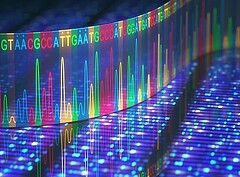Mikrobiomforschung - Möglichkeiten und Grenzen [24.04.19]
Mikroorganismen, in ihrer Gesamtheit auch Mikrobiom, genannt, spielen eine entscheidende Rolle in unserer Gesundheit. Auch Tier- und Pflanzengesundheit wird immer wieder aufs Neue mit dem Mikrobiom in Verbindung gebracht. Die Anwendungsbereiche dieses jungen Forschungsgebiets sind mannigfaltig und die Hoffnungen für mögliche Einsatzfelder groß. Jedoch muss sich die Mikrobiomforschung zurzeit entscheidenden methodischen Herausforderungen stellen, um neben korrelativen Erkenntnissen auch konkrete Wirkmechanismen beschreiben zu können. Einen Überblick zu technologischen Möglichkeiten und methodische Einschränkungen in der Mikrobiomforschung bietet die Hohenheimer Arbeitsgruppe rund um Prof. Fricke in einer Übersichtsarbeit.Originalpublikation
Fricker, Alena M.; Podlesny, Daniel; Fricke, W. Florian (2019): What is new and relevant for sequencing-based microbiome research? A mini-review. In: Journal of Advanced Research. DOI: 10.1016/j.jare.2019.03.006.
Abstract
Microbiome research has transformed the scientific landscape, as reflected by the exponential increase in microbiome-related publications from many different disciplines. Host-associated microbial communities play a role for almost all aspects of human, animal and plant biology and health. Consequently, there are tremendous expectations for the development of new clinical, agricultural and biotechnological applications of microbiome research. However, the field continues to be largely shaped by descriptive studies, the mechanistic understanding of microbiome functions for their hosts remains fragmentary, and direct applications of microbiome research are lacking. The aim of this review is therefore to provide a general introduction to the technical opportunities and challenges of microbiome research, as well as to make experimental and bioinformatic recommendations, i.e. (i) to avoid, reduce and assess the confounding effects of sample storage, nucleic acid isolation and microbial contamination; (ii) to minimize non-microbial contributions in host-associated microbiome samples; (iii) to sharpen the focus on physiologically relevant microbiome features by distinguishing signals from metabolically active and inactive or dead microbes and by adopting quantitative methods; and (iv) to enforce open data and protocol policies in order increase the transparency, reproducibility and credibility of the field.


